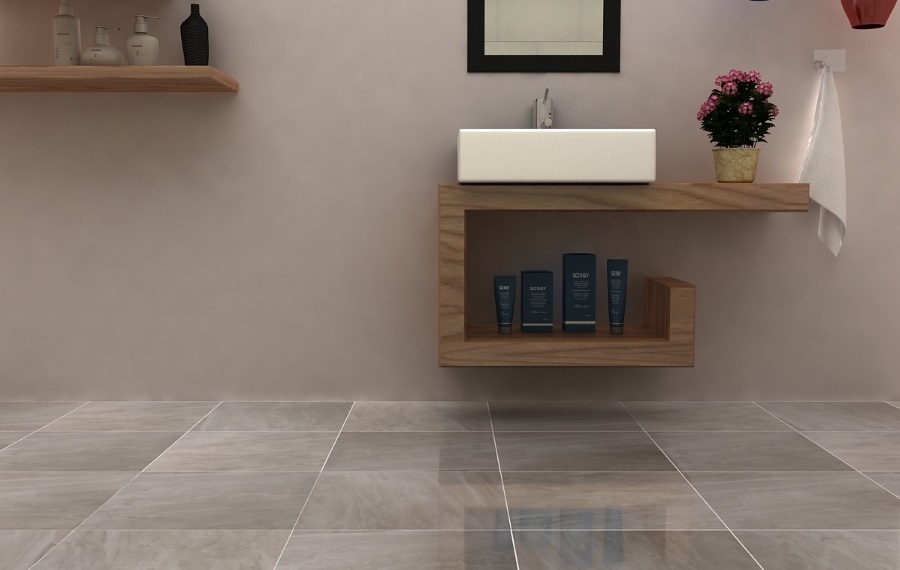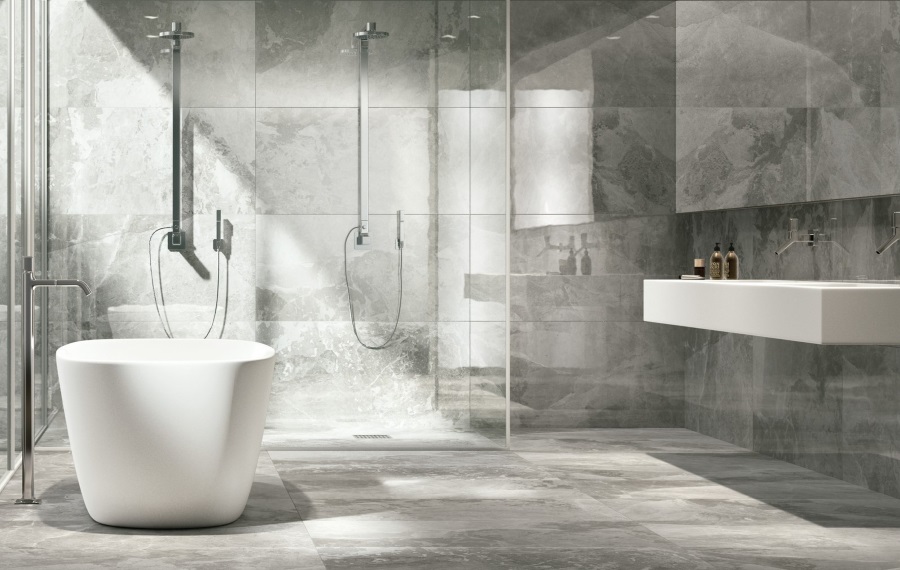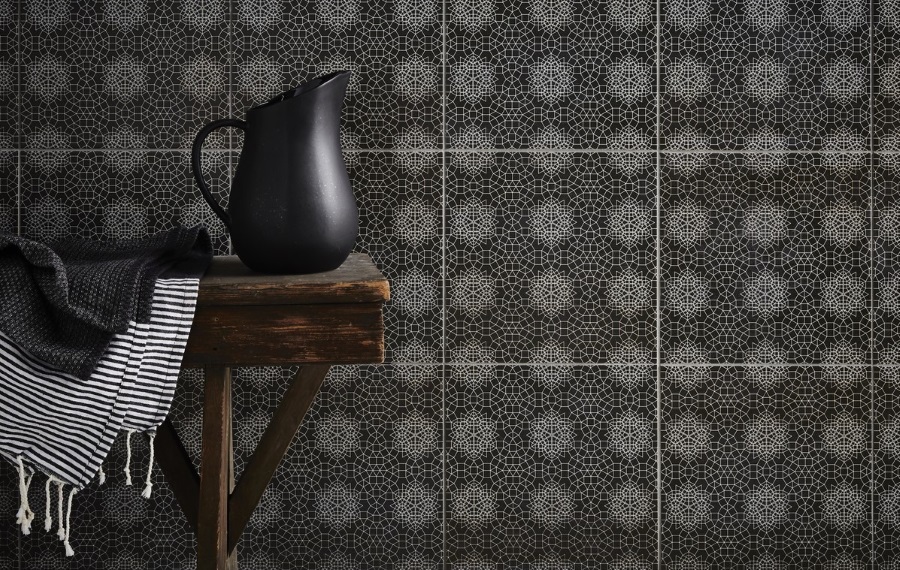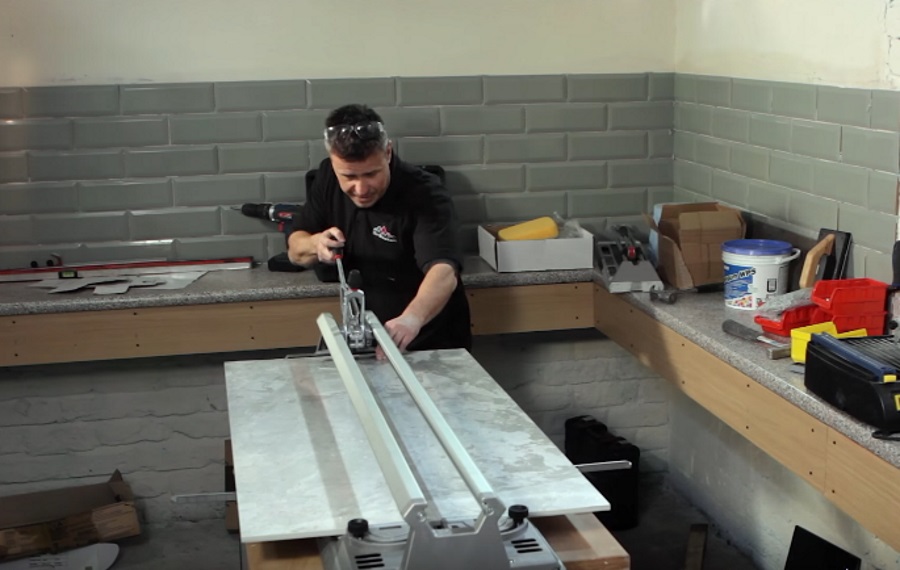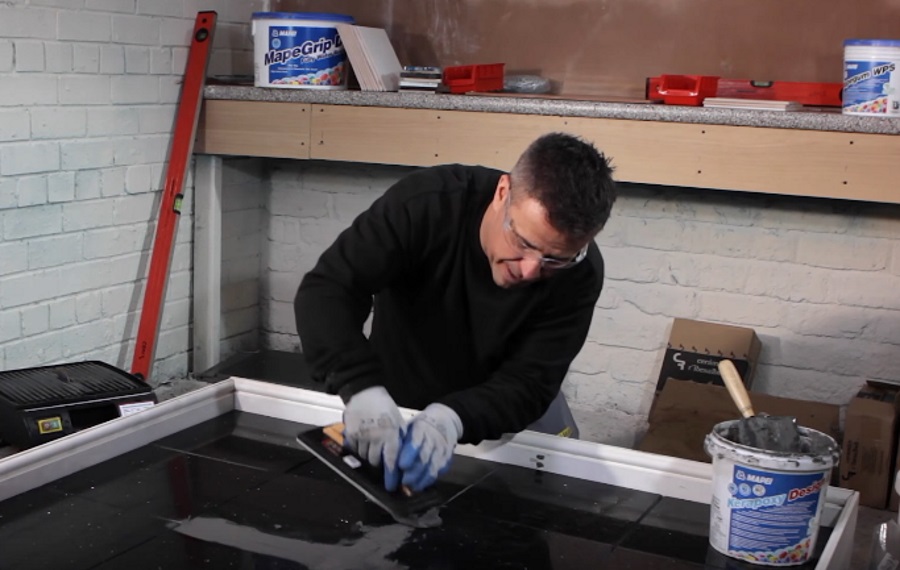The History of Porcelain Tiles
Tiles of all kinds can be traced back thousands of years and their use can be traced all the way back to Egypt in 4000 BC. From those (very) early days in the story of tiles, the art of tile manufacture developed through the Mesopotamian era and production techniques were continually honed and design styles evolved throughout the next few millennia, with the Romans, ancient Greeks, Persian empire, Indian Raj all doing their bit to further the art of tile design and production.
At the same time all this was happening, Islamic tile art was being perfected in the Middle East, whilst in China, distinct and intricate design styles were popularised and subsequently made their way to Europe, with the British, Dutch, Spanish, Italians, and Portuguese becoming particularly enamoured by the products. North and South America soon followed and, with the continual advancement in production techniques, tiles were no longer just the preserve of the elite who used them as ornate decor on buildings, but for your everyday consumer.
Things really took off in the late 1800s when the likes of Minton Hollins revived encaustic tile making and the Arts and Crafts movement saw designers such as William Morris and William de Morgan come to the fore. By the 1920s, porcelain tiles were everywhere, their popularity given a shot in the arm by the Art Deco movement which saw ceramic and porcelain tiles make the jump from being the preserve of grand public buildings and the residences of the wealthy, to becoming a staple of bathrooms and kitchens the world over.
Why Use Porcelain Tiles?
Porcelain is a lot more dense than ceramic and has a much lower moisture content, making it perfect for both walls and floors thanks to its extremely durable nature. A ceramic tile is pressed at 300kg/cm2, whereas a porcelain tile is pressed up to 500kg/cm2. By increasing the pressure during the pressing process, voids and cavities within the bisque are reduced which makes the tile less porous and suitable for external use.The low absorption rate also means that it’s ultra-hygienic and stain resistant too.
Porcelain tiles have a much longer average lifespan than ceramic tiles too – providing they’re kept under ‘normal’ conditions, they will last for hundreds of years (a general rule of thumb says 1mm of thickness = 100 years wear. By way of comparison, ceramic tiles will endure for around 3 – 20 years (dependant on ‘traffic’).
Whilst it’s not unusual to use ceramic tiles on floors, the durability and hardwearing qualities of porcelain tiles makes them a popular choice. Not only that, developments in tile printing technology has meant that there are now a huge variety of porcelain tiles available that faithfully replicate natural materials such as slate, marble, and timber, as well as man-made composites such as concrete and even ferrous metals, only minus any of the associated maintenance.
Installing Porcelain Tiles
Natural stone, slate, and timber all requires quite some effort to install, whereas tiles that replicate these materials are far easier to fit. Most porcelain tiles can be cut using a dry tile cutter and waste and mess is minimal. However, to take on more intricate cuts such as around pipework and sockets, you’ll need to use a wet wheel diamond cutter. As we’ve already covered, porcelain tiles come in a vast array of sizes, thicknesses, and finishes, and so installation procedure will vary depending on your choice. However, in most cases, it’d be advisable to use a fast-set flexible adhesive such as Mapei Keraquick, regardless of the type of installations (wall or floor).
The great thing about natural effect porcelain tiles is that they do not require sealing once they’ve been installed (unlike real stone/wood etc), meaning that you’re good to go once your adhesive has set and you’ve grouted. There is one exception however and that comes in the form of polished porcelain tiles. This type of tile does require post-installation sealing to ensure the surface remains durable and hardwearing and to aide water repellency throughout the life of the tile. Sealing polished porcelain tiles is relatively hassle-free however; just apply a couple of coats of polished porcelain and stone sealer (we recommend using Fila MP90 Polished Porcelain & Stone Sealer).
When it comes to the layout you choose, well, the world is your lobster. With so many variants of porcelain tiles available for both walls and floors, you really are spoiled for choice. Large format, natural stone effect tiles are a popular choice for open plan, multi-use areas due to the fact that fewer tiles are required meaning reduced installation times and not as many grout lines. Another added bonus of this type of tile is that creating a seamless, continuous aesthetic between lounges, dining areas, hallways, and even outside areas is easy.
Wood effect tiles are enjoying a huge surge in uptake at present too, for much the same reasons as mentioned previously. Equally adept at bringing the natural beauty of timber to both walls and floors, the vast array of wood effect tiles available from weathered, driftwood-esque planks, right through to tiles that ape traditional parquet floors. We would always advise our customers to use a professional tiler where possible as they’ll have experience of working with porcelain and be able to accurately measure up and cut tiles, ensuring you achieve the look you desire. That said, if you’re a competent DIY enthusiast and have the right tools there’s no reason why you can’t install your new tiles yourself.
Porcelain Tile Colours & Types
Here at Tile Mountain, we stock over 170 types of porcelain tiles and so to list them all here would make this article really rather long and reading it would take up quite a bit of your time (if you really want to check them out though you can visit our porcelain category). What we will tell you though is that porcelain tiles come in a huge range of colours and finishes including the natural stone replicating Limestone Matt Almond, white and grey marble effect floor tiles such as our Griege, Calacatta, and Inverno ranges, and rustic brick effect tiles and split-face mosaics such as Muralla and Yosemite.
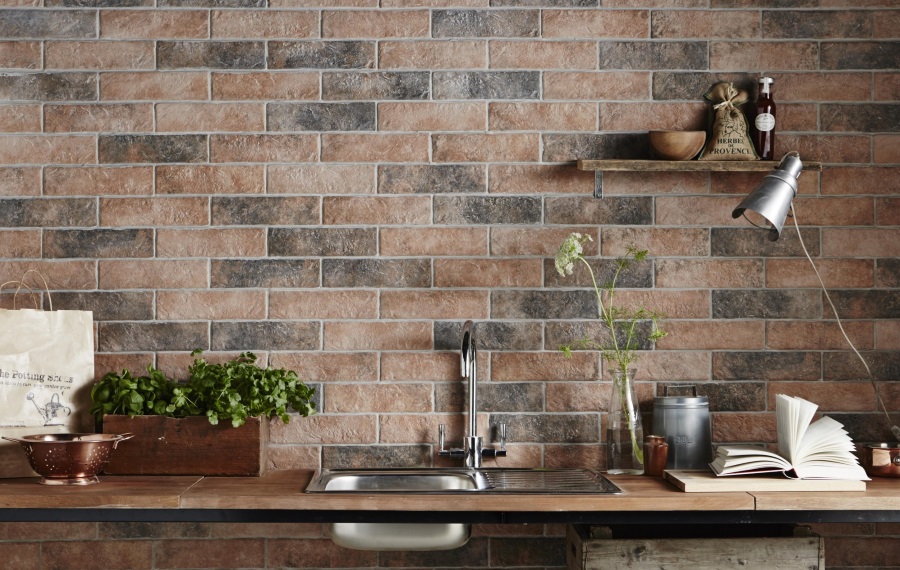
Visualiser
Our Tile Visualiser tool has been created to help decide on colours and combinations, so please do give it a try. Pick from hundreds of tile options, room-sets and even grout colours to create your dream room!

Porcelain Tile Sizes
Sizing spans from 300mm x 300mm (Marrakech) to 600mm 1200mm (Greige) and everything in between, with most wood effect tiles coming in plank-like orientation (usually 248mm x 1000mm) to authentically replicate wooden floorboards. We’d recommend installing this type of tile in a ¼ bond layout so as to really get that genuine wood floor look. When it comes to finishes, a large number of our porcelain tiles feature matt surfaces and high slip ratings, making them perfect for use in wetrooms – take a look at our rather useful post on creating a wet room to find out which tiles to go for.
How To Choose High-Quality Porcelain Tiles
The fact that our vast range of porcelain tiles are inexpensive does not necessarily mean they are low quality. Prices vary considerably from the high street where some retailers sell porcelain tiles at nearly double the price of those sold by online retailers. The best way to know which tile is worth the price is by getting samples of tiles to compare their quality. When you receive your samples, the finish should not have marking, dimples, scratches or imperfections on the face, and if you’ve purchased solid colour tiles, those colours should be clean and crisp and free from fading.
Some porcelain tiles have rectified edges – this means that they have machine-cut, straight edges that allow them to be positioned closer together during installation meaning smaller grout lines. You can check the quality of rectified tiles by running your finger along the edges to ensure that they are straight cut and free from bumps and protrusions. Also, you’ll want to consider the practical side of things – if you are working on a kitchen or bathroom remodel, you want to be sure they are sent in sturdy boxes, and adequately wrapped to ensure they are protected during transit and to make easier work of moving the tiles into and around your project area.
Using Grout with Porcelain Tiles
With so many different variants of porcelain tiles available, sticking to one boring style of grout would be very restrictive when it comes to augmenting your own personal style. Thankfully, there are loads of grout options for you to experiment with! Coloured grouts can be used to draw the eye and accentuate feature floors created with patterned tiles for example, or deployed with similar coloured tiles to create an unblemished, continuous aesthetic.
Darker grouts in black and greys can be combined with lighter tiles to really make floors pop against your walls, whilst glitter grout can be teamed with Quartz Stone floor tiles and for a glamorous, sparkly touch or with high gloss polished porcelain tiles to create an opulent, luxury aesthetic.
How To Install Porcelain Tiles
Wall Preparation
Make sure the wall is suitably prepared for tiling. Wall tiles can be fixed to most substrates including plasterboard, skimmed plaster, and tile backer boards. If you’re tiling onto surfaces such as render, plywood, plaster, plasterboard, or sand/cement screeds you’ll most likely need to prime the surface before beginning to tile so as to reduce absorption. Apply Mapei Primer G using a roller or brush and leave to dry for at least two hours before beginning to tile for improved adhesion.
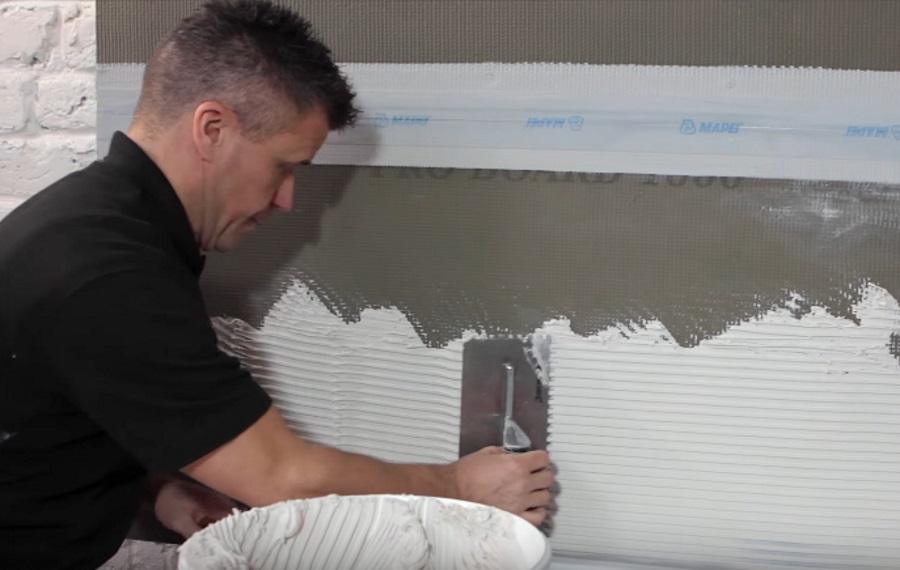
Floor Preparation
Not all floors are made equal, but fear not, as Mapei Ultraplan Renovation Screed is on hand to ensure uneven floors are levelled in readiness for tiling. Easily applied by hand or pump, all you have to do is get it laid out, finished with a trowel or spiked roller, wait 24 hours and you’re all set to start laying your tiles. The same advice provided for when tiling onto render, plasterboard, plywood walls applies here too – so make sure that you’re primed to prime!
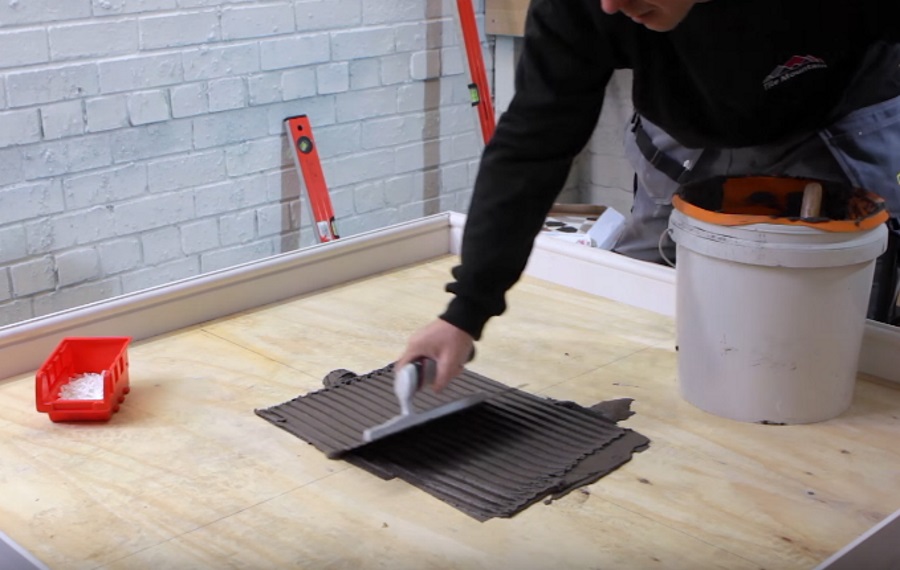
Setting Out
Find the centre of the wall or floor and mark a vertical and horizontal line using a spirit level. Dry lay your tiles, starting at the centre working your way out towards the end of the wall/floor. If you require the tiles at either end to be cut at approximately the same size, do this by adjusting your vertical reference line.
Fixing
Starting at your middle reference point, apply your tile adhesive to an area of approximately 1m, two at a time using a notched trowel (6mm notch) at a 45° angle to the wall. Firmly press the tile into the adhesive using a slight twisting motion. If you are fixing tiles in a brick pattern, T-Spacers are available for this purpose. Use the required sized spacer between each tile on all sides to give consistent sized grout lines.
Cutting
Depending on the thickness of the tile, porcelain tiles can be cut in a straight line using a score & snap tile cutter. However, the vast majority of porcelain tiles will be quite thick (hence their supreme durability) and can only be cut using a wet wheel diamond tile cutter. For irregular cuts such as around plug sockets, an electric diamond wheel tile cutter is beneficial. However, the same type of cut can be achieved using a straight cutter for scoring with a pair of tile nippers. These can be used to nip or nibble pieces from the tile until the desired shape is achieved.
Grouting
Allow your tile adhesive a full 24 hours to cure before grouting. Mix the grout as per manufacturer’s instructions to form an even paste. Apply using a rubber grout float or squeegee at a 45° angle to the wall making sure to press the grout firmly into the gaps. Wipe any excess grout from the face of the tile using a damp sponge, being careful not to remove the grout from the grout line. After approximately 30 minutes, buff the tiles with a soft dry cloth to remove any grout haze. This can be repeated until the face of the tiles are clean.
Finishing
All internal corners (both horizontal and vertical) should have matching silicone applied to eradicate any cracking from movement such as along worktops/stud walls etc.
How To Care For Porcelain Tiles
Providing you have followed the installation advice applicable to the particular porcelain tiles you’ve purchased i.e. sealing if required, then the tiles should be extremely easy to care for once they’re installed. For porcelain tiles with gloss or satin finishes, simply wipe down with a damp cloth and warm water and dry or buff with a soft towel to keep them looking their shiny best. For porcelain tiles with matt or riven finishes, use the same method but minus the buffing.
If your porcelain tiles have gotten particularly dirty we recommend a splash of Fila Tile & Stone Cleaner in a bucket of warm water (it’s highly concentrated and so can be diluted to suit your needs) and then wiping down the stained tiles in much the same way as described above. To remove really stubborn stains such as grease or wax then look no further than Fila PS87 Stain Remover – it’s great for removing ground in dirt and organic stains.
To prevent textured finish and natural effect porcelain tiles getting dirty in the first place you can protect them once they’ve been installed by using Filastop Dirt or Fila MP/90 Eco Plus stain proofing agents. Finally, to keep your grout looking great for years to come, we recommend treating it with Fila Fuga Proof Grout Protector (for tiles deployed in wet areas).
Hopefully this guide will have provided you with all you need to know about porcelain tiles. Feel free to have a click around the rest of the Tile Mountain blog as there’s tonnes of useful and interesting stuff about porcelain tiles and the like and if you have any further questions, just give our customer service team a ring on 01782 223822 and they’ll be happy to help.
Here at Tile Mountain, we not only have a huge range of tiles to suit every purpose, we also have a wealth of tiling knowledge gained from over 30 years in the tile industry, (which we’ll do or best to share with you across these very pages).
Whether you’re looking for the perfect tiles for your next home improvement project, are searching for some style inspiration, or simply need a bit of help and advice, you’re in the right place.



